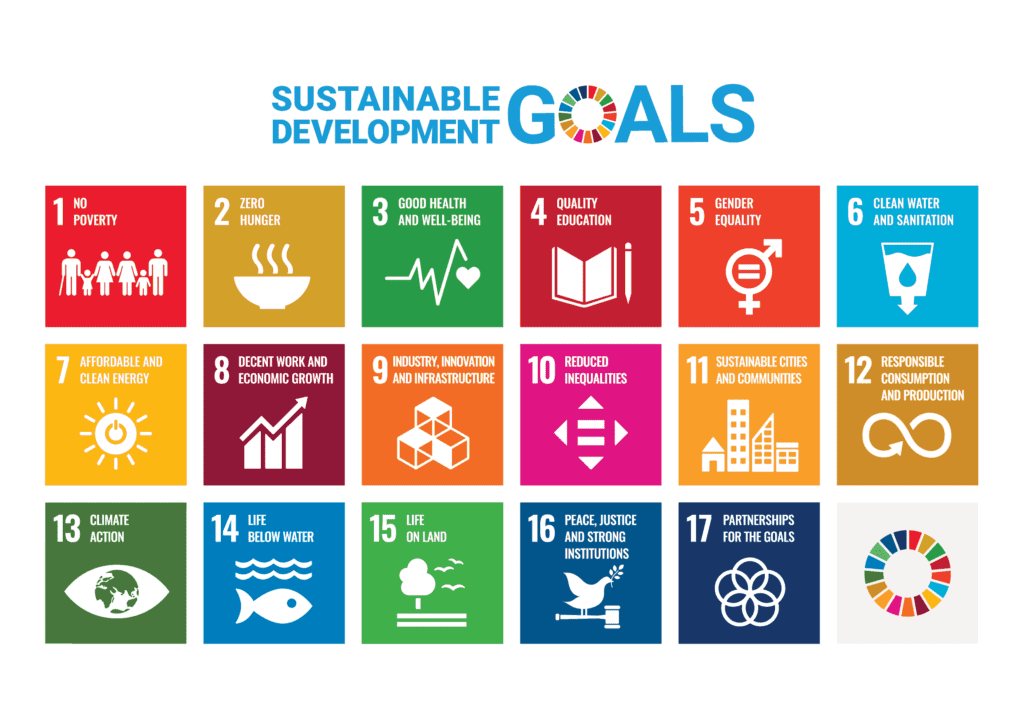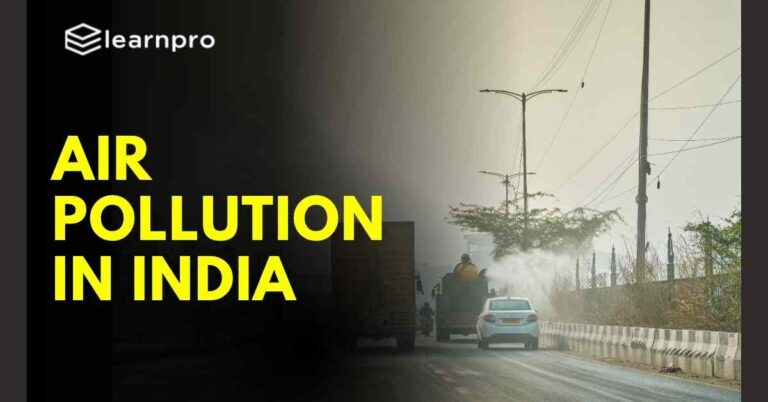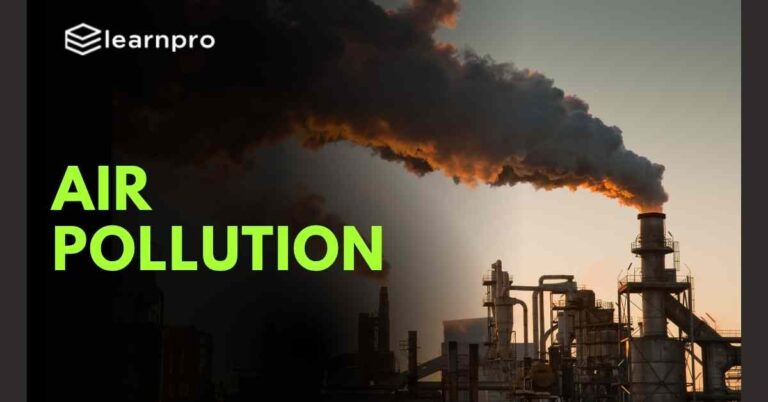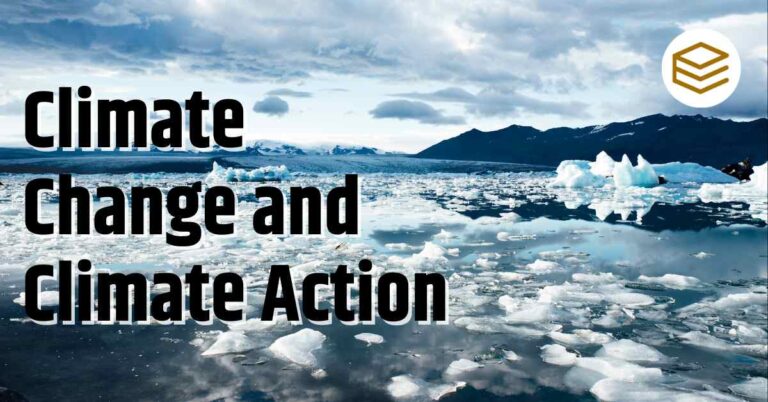October 25, 2025 1:30 pm
Introduction to the SDGs
The Sustainable Development Goals (SDGs) are a set of 17 global goals established by the United Nations in 2015 as part of the 2030 Agenda for Sustainable Development. They serve as a universal call to action to eradicate poverty, protect the planet, and ensure peace and prosperity for all by 2030. These goals are interconnected and aim to balance the three dimensions of sustainable development: economic, social, and environmental.
List of the 17 Sustainable Development Goals
| Goal Number | Goal Name | Key Objectives |
|---|---|---|
| 1 | No Poverty | Eradicate extreme poverty and reduce economic inequalities globally. |
| 2 | Zero Hunger | Achieve food security, improve nutrition, and promote sustainable agriculture. |
| 3 | Good Health and Well-being | Ensure healthy lives and promote well-being for all ages. |
| 4 | Quality Education | Ensure inclusive and equitable quality education and promote lifelong learning opportunities for all. |
| 5 | Gender Equality | Achieve gender equality and empower all women and girls. |
| 6 | Clean Water and Sanitation | Ensure availability and sustainable management of water and sanitation for all. |
| 7 | Affordable and Clean Energy | Ensure access to affordable, reliable, sustainable, and modern energy for all. |
| 8 | Decent Work and Economic Growth | Promote sustained, inclusive, and sustainable economic growth, full and productive employment, and decent work for all. |
| 9 | Industry, Innovation, and Infrastructure | Build resilient infrastructure, promote inclusive and sustainable industrialization, and foster innovation. |
| 10 | Reduced Inequalities | Reduce inequality within and among countries. |
| 11 | Sustainable Cities and Communities | Make cities and human settlements inclusive, safe, resilient, and sustainable. |
| 12 | Responsible Consumption and Production | Ensure sustainable consumption and production patterns. |
| 13 | Climate Action | Take urgent action to combat climate change and its impacts. |
| 14 | Life Below Water | Conserve and sustainably use oceans, seas, and marine resources for sustainable development. |
| 15 | Life on Land | Protect, restore, and promote sustainable use of terrestrial ecosystems, combat desertification, and halt biodiversity loss. |
| 16 | Peace, Justice, and Strong Institutions | Promote peaceful and inclusive societies, provide access to justice, and build effective institutions. |
| 17 | Partnerships for the Goals | Strengthen global partnerships to achieve sustainable development. |

Key Features of the SDGs
- Universal Application:
The SDGs apply to all countries, irrespective of their level of development, ensuring a global commitment. - Interconnectedness:
Each goal is interconnected, meaning progress in one area often impacts others. For instance, improving education (Goal 4) can reduce inequalities (Goal 10) and foster economic growth (Goal 8). - Targets and Indicators:
The 17 goals are broken down into 169 targets and tracked using 231 unique indicators to measure progress comprehensively.
Progress on the SDGs (2023 Update)
Achievements:
- Extreme Poverty Reduction:
Extreme poverty rates fell from 10% in 2015 to 8.4% in 2020, despite challenges posed by global crises. - Access to Electricity:
The percentage of the global population with electricity access increased from 83% in 2010 to 90% in 2022.
Challenges:
- Pandemic Setbacks:
The COVID-19 pandemic reversed progress in areas like health (Goal 3), education (Goal 4), and economic growth (Goal 8). - Climate Action Lagging:
Global emissions are not reducing at the required pace to meet the targets of Goal 13 (Climate Action).
Case Studies: SDG Implementation
1. SDG 6: Clean Water and Sanitation in Kenya
Kenya has implemented community-based water management programs, increasing clean water access from 57% in 2000 to 72% in 2020.
2. SDG 7: Affordable and Clean Energy in India
India’s International Solar Alliance and renewable energy projects have provided electricity to over 99% of households, significantly advancing Goal 7.
Role of Partnerships in Achieving the SDGs
Goal 17, Partnerships for the Goals, underscores the importance of collaboration between governments, private sectors, and civil society. Successful partnerships:
- Finance Initiatives: Mobilize resources for infrastructure and innovation (Goal 9).
- Technology Sharing: Promote global access to clean technologies (Goal 7).
- Capacity Building: Strengthen institutional frameworks in developing nations.
The Way Forward
While significant strides have been made, achieving the SDGs by 2030 requires:
- Enhanced Financing:
Mobilizing the estimated $3.5 trillion annually needed to meet all goals. - Stronger Climate Policies:
Accelerating commitments under the Paris Agreement to tackle climate change. - Inclusive Policies:
Addressing inequalities through gender-focused and community-driven programs.
Conclusion
The Sustainable Development Goals represent humanity’s collective commitment to a more equitable, sustainable, and prosperous future. Their success hinges on global cooperation, sustained political will, and innovative solutions to complex challenges. As we approach 2030, the SDGs serve as both a roadmap and a moral imperative for transforming our world.






[…] Sustainable Development Goals (SDGs): […]
[…] The Millennium Development Goals (MDGs) were a set of eight global objectives established in 2000 by the United Nations (UN) to address the world’s most pressing development challenges. Adopted as part of the Millennium Declaration, the MDGs aimed to improve social and economic conditions in the world’s poorest countries by 2015. These goals provided a framework for global development efforts and served as a precursor to the Sustainable Development Goals (SDGs). […]
[…] Sustainable Development Goals (SDGs): A Comprehensive Analysis 2025 […]